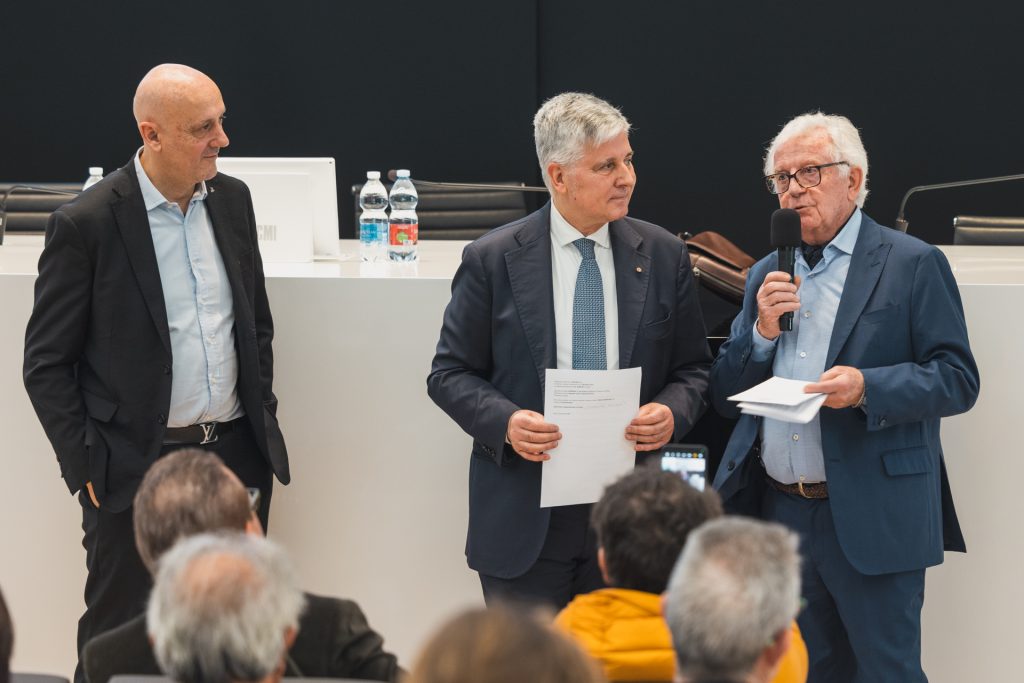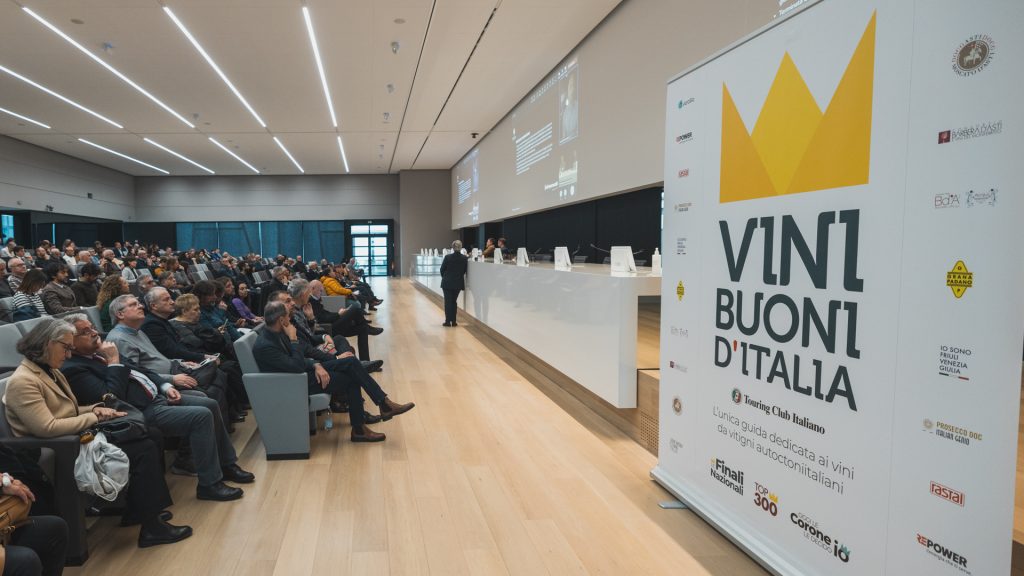The ViniBuoni d’Italia guide is one of the most authoritative publications in the Italian wine scene, founded to recognize and valorize quality wines made from native grape varieties in the Bel Paese. This guide was conceived and created by Mario Busso, a luminary in the world of Italian wine, whose passion and knowledge have significantly contributed to the promotion and dissemination of wine culture in Italy.
Mario Busso

Mario Busso, having noticed the lack of a guide highlighting quality wines made from native grape varieties produced in Italy, decided to undertake this ambitious endeavor. His intent was to offer wine enthusiasts a reliable and authoritative resource to guide them in choosing the best products on the market.
I had the opportunity to meet Mario Busso, the founder of the guide, and from his words, we gain further insight into the guide ViniBuoni d’Italia and some topics related to wine.
ViniBuoni d’Italia Guide

The guide ViniBuoni d’Italia aims to promote Italy’s diversity and oenological excellence through native grape varieties. Through his guide, Mario Busso has significantly contributed to spreading knowledge and appreciation of Italian wines both nationally and internationally. Thanks to his dedication and expertise, the guide ViniBuoni d’Italia has become a point of reference for all those wishing to explore the vast and fascinating world of Italian wine, offering them a valuable tool to discover and appreciate the country’s best labels.
One of the initiatives that has been highly successful is opening up to wine lovers the opportunity to voice their opinions on the wines included in the guide. Mario Busso and his staff have dedicated an award given by a “popular jury” to the wines in the guide. It’s a significant communicative step and a great act of inclusion that welcomes the public with open arms and actively involves them.
How did the idea of the Guide to Good Wines of Italy come about?
Well, we’re now in the 21st edition, so the idea stemmed from a particular moment, more than 20 years ago: within the realm of guides, at that historical moment, there was a preference for wines that represented body and strength, so there was emphasis on merlot, cabernet, etc., often at the expense of historical and native grape varieties.
From this situation, spurred on by some American journalist friends, we began to reflect on our immense heritage in Italy.
Italian Native Grape Varieties
Keep in mind Patrizia that 20 years ago it was difficult to get the concept of ‘native grape varieties’ across. Today, the term ‘native grape’ is widespread, also because markets are increasingly favoring these grape varieties.
We started working following the indications of Attilio Scienza, the foremost expert and scholar of Italian grape varieties, especially native ones.
I still remember he gave us a very important clue:
‘For a grape variety to characterize itself territorially and be representative in that territory, it must have been present for at least 300 years.’
Attilio Scienza
Attilio Scienza also told us that in Italy there are approximately 1200/1250 grape varieties, and at least 500 used in winemaking. That was amazing!
When did you officially start this adventure then?
In 2003, we began compiling the guide. We received just under 6000 labels initially, because we were relatively unknown. We started this work with great enthusiasm, and today there are over 35,000 wines tasted for the guide.
Considering the historical period, the idea was challenging…
The idea was truly crazy. We always wanted only wines made from native grape varieties 100% and didn’t even accept wines that had as little as 15% of non-native grape varieties. We were revolutionaries because adding cabernet or merlot to local grape varieties was common practice.
Italian Excellence
We wanted to represent Italian excellence, not only oenological but also cultural. Vineyards hosting native grape varieties are open-air museums. So, that’s where the idea of the guide originated.
The topic of generational change among consumers is often discussed, but also many producers and significant companies are experiencing or have recently experienced generational shifts. What role do native grape varieties play in the new generations of winemakers?
From my direct experience, I can assert that there is a lot of attention. Engaging frequently with producers, I sense a demand from evolved markets such as Europe, the United States, Canada, etc., for niche production. This demand stems from the need to differentiate offerings to consumers, primarily noticeable in foreign markets.
We are also experiencing a decline in consumption after many years of the Italian wine boom. How do you think this constant search for native grape varieties can be reconciled with the decline in consumption?
In my opinion, if we only communicate the product, completely disconnected from the territory, we don’t have much to say. Today, there is an increase in quality at an international level, that’s for sure. We must increasingly connect the direct experience to what surrounds the wine, to mythology, art, culture, and the territory, in short. This could be a path to take.
The more we taste a product in its place of production, the more we will appreciate it, because at that moment we will understand that it is truly a product of that place. The fact that wine consumption is decreasing is natural. But if we manage to connect the experience to the product itself, this will be successful.
If there are more than 1200 grape varieties, of which 500 are used for winemaking, it means that there is a heritage linked to those who wanted to preserve these grape varieties, to culture, and people. From my point of view, this is also true for the new generations who may find interest in the local culture.
So, do we still have a long way to go in wine communication?
Sometimes I wonder if there’s still much to do. Then I answer myself that there’s a desire for knowledge. When I talk to people, they don’t ask about the nuances of wine, whether it’s violet or peppery or rose. They want to know who the producer is, where the vineyard is located, and what approach is used to produce that specific wine. We just have to change our approach.
If you were to make a prediction, are there any regions that will emerge in the coming years?
Beyond Piedmont and Tuscany, already renowned everywhere, the regions that manage to connect to points of attraction will emerge. Let me give you an easy example: the grape varieties of the Campania region: by stating that they are close to Naples, attraction will be created. If in communication, a geographical placement is given with strategic points, then many small areas can emerge.
What are the upcoming projects on the horizon for the Guide to Good Wines of Italy?
It’s a period of evolution. I’m collaborating with some American colleagues. We want to create new initiatives using our approach to wine. The aim is to spread native grape varieties across Italy, but not only here. From this perspective, there is much to be done, even here in Italy. I can say that our next step is looking beyond Italy.
For more information, visit the ViniBuoni d’Italia website.



